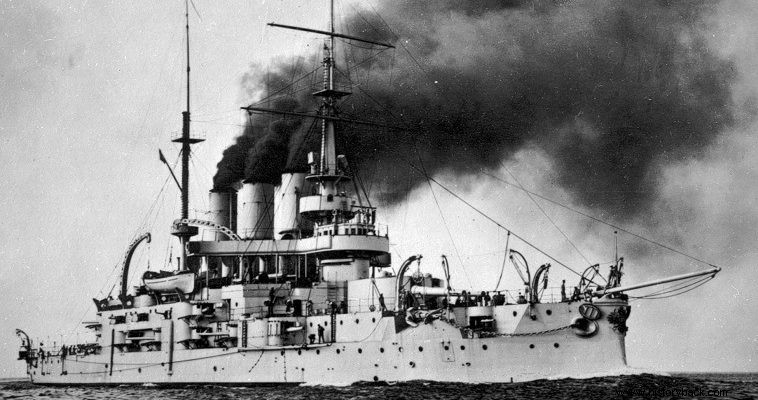
The battleship "Potemkin" entered service in 1903 with the Black Sea Fleet. She was a typical battleship of the time, equipped with four 12in (305 mm) guns, mounted in two twin turrets, one in the bow and one in the stern.
It also had 16 152 mm guns. 14 of 76 mm. six of 47 mm. and five torpedo tubes. She had a maximum armor of 9in, a length of 115.36m, a displacement of 12,582 tons and a maximum speed of just 16 knots. It had a crew of 741 men.
The battleship was named after the general, prime minister and lover of M. Catherine, Prince Potemkin. By no means could the ship be considered exceptional, however, as its most likely opponent would be the Turkish navy, it was considered satisfactory.
However, the ship became famous because of the well-known stand that broke out on it, on June 27, 1905, when some sailors, protesting the quality of the rations, mutinied.
In 1905 the morale of the Russian navy, after its disastrous defeat at the hands of the Japanese, was at its worst. The defeat had caused clashes, incited by the Bolsheviks, throughout Russia. This rebellion was recorded by Sergei Eisenstein in his well-known film "Battleship Potemkin".
The mutinous crew killed the officers and for several days sailed from port to port on the Black Sea. Finally, persecuted, the ship fled to Romania. There the insurgents sank it themselves, opening the safety valves and asked for asylum.
The Russian navy, however, raised the ship, which had sunk in the shallows, and thus the "Potemkin" returned to Sevastopol, on July 27, 1905, the day of St. Panteleimon. Thus it was decided to name it "Panteleimon". The ship was known by this name for the next 12 years.
With the start of World War I, the ship fought against the Turkish-flagged German battleships Goebben and Breslau. The first was a state-of-the-art battlecruiser, armed with 10 11in (280mm) guns. The second was a simple light cruiser. The "Panteleimon" was twice confronted by the "Gebben", without suffering damage.
In 1917 with the collapse of the tsarist regime, the ship was again named Potemkin. A little later he changed his name again and was now called "Freedom Fighter". The ship was captured by the Germans, in 1918, in Sevastopol. In December 1918, however, it came under the control of the Whites and the British and French who were fighting the Bolsheviks.
The British destroyed the ship's engines so that even if the Bolsheviks took it they could not use it. After this the ship was left to rot, until 1924, when it was broken up.
